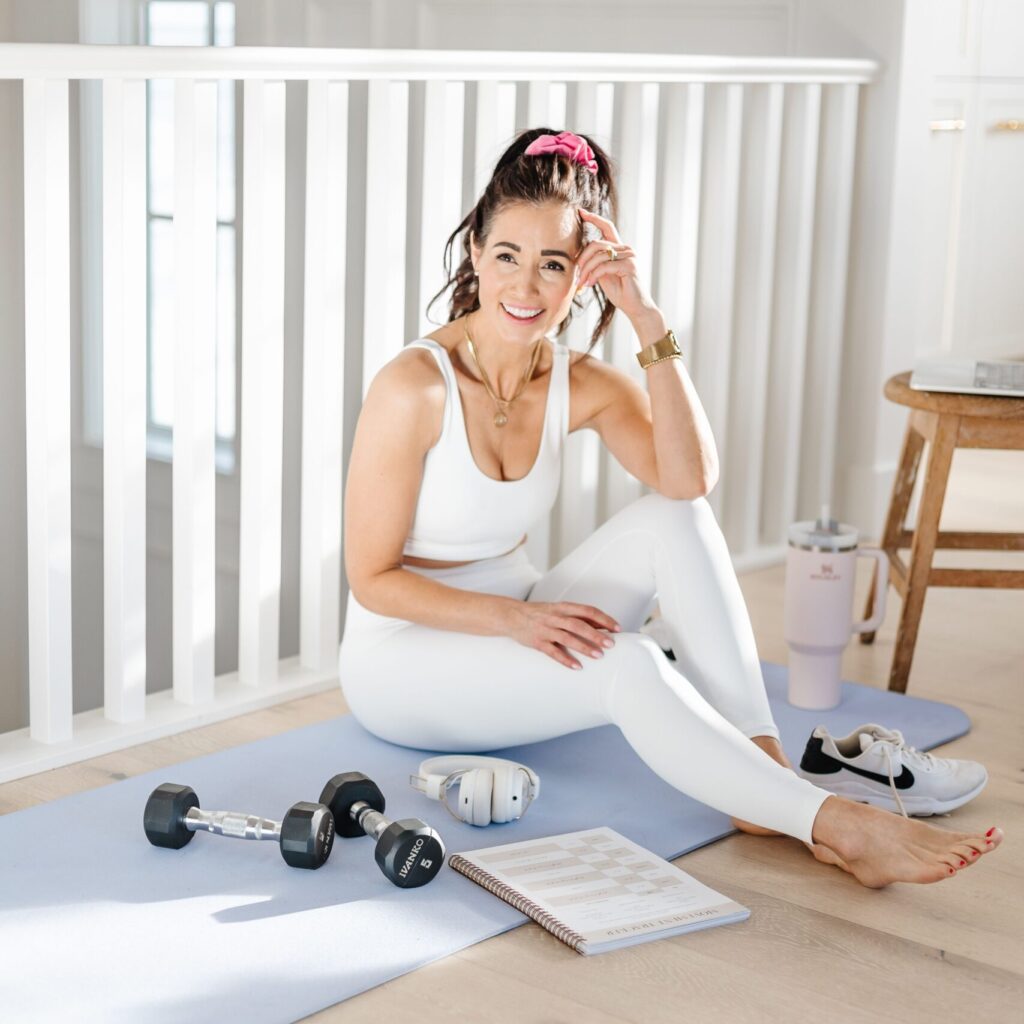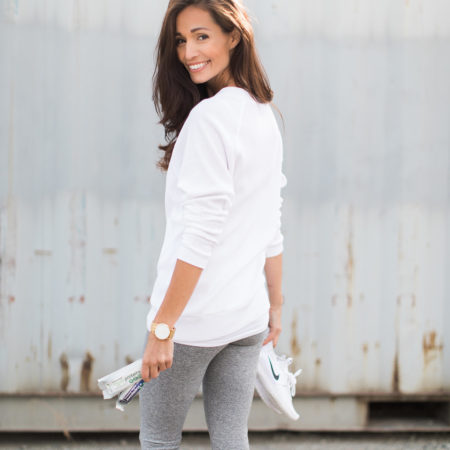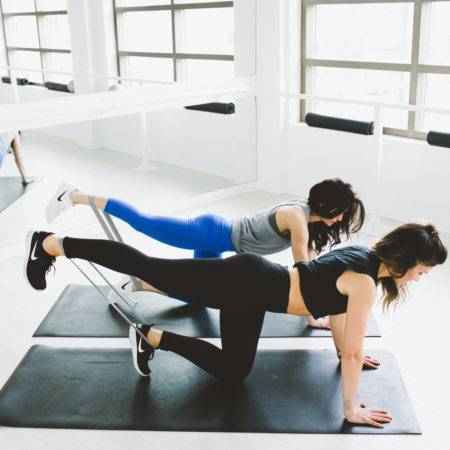I’ve been wearing a weighted vest lately on my hikes and walks, which has prompted a wave of questions. Is a weighted vest what you need? Keep reading to find out!
In this blog, I’ll answer all of your burning questions as we dive into the benefits of wearing a weighted vest, how to choose the right one for your body, the pros and cons, average cost, and more.
What Is a Weighted Vest?
A weighted vest is a piece of wearable fitness equipment designed to add extra resistance to your body during exercise or daily activities. The weight is evenly distributed throughout the vest to help avoid throwing off your balance.
Most vests are adjustable, allowing you to increase or decrease the weight as needed. HERE is the vest I use. I have a 20lb vest BUT … I don’t recommend it (more on that later). Read below for how you should actually choose a vest.
Benefits of Wearing a Weighted Vest
Let’s just say I’m not wearing it for fashion! Adding a weighted vest to your fitness routine can have several science-backed benefits:
1. Improved Cardiovascular Endurance
Wearing a weighted vest during activities like walking, hiking, or stair climbing increases your heart rate, helping to improve overall cardiovascular health.

2. Increased Strength and Muscle Activation
The added resistance forces your muscles, especially your core, legs, and back, to work harder, promoting muscle development even during simple movements. Don’t forget to eat something with protein in it after your workout to help with muscle protein synthesis (my blog on How to Choose a Protein Powder is helpful.
3. Greater Calorie Burn
More weight means more energy required. Even everyday activities like walking or doing chores burn more calories with a vest.
4. Boosted Bone Density
The extra load from a weighted vest can stimulate bone growth and improve bone density, which is beneficial as we age. I have a low bone density so this is on my radar.
5. Enhanced Posture and Balance
The added weight encourages better posture and core engagement, which may reduce the risk of falls or injury over time. The catch is that you want to make sure your weighted vest isn’t too heavy for you: see below on how to calculate this.
How to Choose a Weighted Vest
When picking the right weighted vest, consider these 3 key factors:
1. Comfort and Fit
Look for adjustable straps and breathable material. A good vest should hug your body without shifting during movement.
2. Weight Capacity
Some vests start as low as 4 lbs and can go up to 60+ lbs. For ultimate flexibility, choose a vest that allows you to add or remove weight easily as your strength increases.
3. Purpose of Use
- For walking/hiking: A lighter vest (5–15 lbs) is ideal.
- For strength training: A heavier vest (20–40+ lbs) can provide greater resistance (but use with caution and consult a professional before venturing into this territory)
- For general fitness or rehab: Go light and focus on balance and movement.
How Heavy Should a Weighted Vest Be?
This is one of my most common questions, and rightly so. And I’ll admit – my vest is on the heavy side: I have a 20 lb weighted vest and am looking at getting one that is lighter.
The general rule is: Start with 5–10% of your body weight.
For example, if you weigh 150 lbs, start with 7.5 to 15 lbs. You can always add more weight as you get stronger.
Pro tip: It’s better to start light and focus on form. Overloading too quickly can lead to injury or muscle strain. Listen to your body, if you feel pain or discomfort (especially in your joints or back), reduce the weight or stop altogether.
Risks of Wearing a Weighted Vest
While weighted vests offer many benefits, they aren’t for everyone. Here are some potential risks to consider:
1. Joint Stress and Damage
- Too much load can put excess pressure on your knees, hips, ankles, and spine.
- This can accelerate wear and tear (especially in knees and lower back) and increase the risk of osteoarthritis or other joint problems long-term.
2. Posture Problems
- A heavy vest can pull your shoulders and spine forward unnaturally, especially if your core muscles aren’t strong enough to stabilize the weight.
- Poor posture during movement = higher risk of chronic back pain, neck strain, and muscle imbalances. My initial vest was too heavy (20 lb), and it’s caused a neck strain as a result.
3. Reduced Breathing Efficiency
- Extra weight pressing on your chest can restrict lung expansion if the vest is too tight or too heavy.
- This can lead to shortness of breath, dizziness, or reduced exercise performance – especially during cardio.
4. Injury Risk During Movement
- When running, jumping, squatting, or doing dynamic movements with too heavy a vest, you greatly increase the chance of:
- Falls
- Rolled ankles
- Muscle strains (especially hamstrings, calves, back)
- The extra load can also alter your natural stride or movement mechanics, leading to overuse injuries.
5. Overtraining and Burnout
If the load is too high, you risk overtraining syndrome: fatigue, injury, poor recovery, and plateauing or regressing rather than progressing.
How Much Do Weighted Vests Cost?
Here’s a general guide to pricing:
| Type | Price Range |
|---|---|
| Basic (4–10 lbs) | $40–$80 |
| Mid-range (10–20 lbs) | $80–$130 |
| Premium (adjustable/ergonomic) | $130–$200+ |
HERE is the vest I use
Final Thoughts: Is a Weighted Vest Worth it for Women?
Absolutely, if you’re looking to challenge your body in a safe and accessible way, a weighted vest can be a game-changer. Whether your goal is to build strength, improve posture, or simply make your walks more effective, this small investment can deliver big results.
Just remember: start light, stay consistent, and listen to your body.
Have You Tried a Weighted Vest?
Drop your thoughts in the comments, or share your favourite way to use one!







Thanks for sharing! I’m 8 months postpartum and I’ve been wearing a 8lbs weighted vest while pushing my twins in a stroller. The vest helps me activate my core and increases the resistance on my walks, I’m finding it super helpful, even at a lower weight.
Hi Emily! That is fantastic! Thanks for sharing xx
Weighted vests are a fitness trend. First and foremost, if you aren’t hitting 10,000 steps a day, that should be your primary goal. Don’t worry about spending your mental energy wondering if you should use a weighted vest or even spend your money on one. Don’t over complicate the basics. Just get up and move!